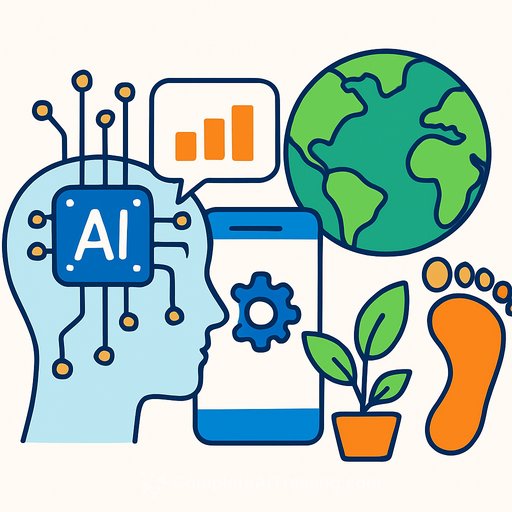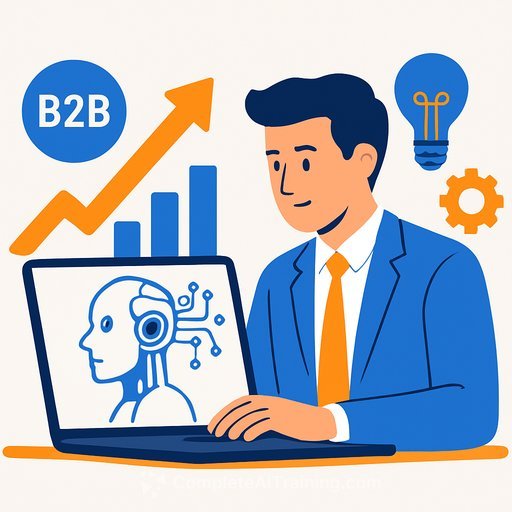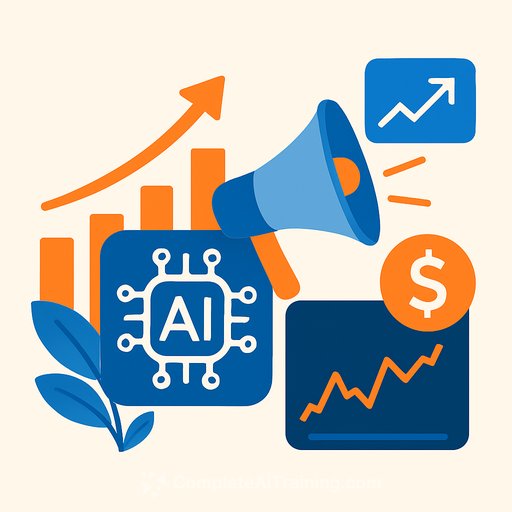AI's hidden environmental cost: what marketers can do right now
Within two years, most creative work in marketing will use generative AI. It boosts creativity, speeds up production, and keeps teams competitive. It also draws a lot of energy and leaves a bigger environmental bill than many expect.
The question is simple: how do you get the upside of AI without undermining your sustainability goals? Our team has kicked off an environmental impact study and built a carbon calculator for marketing use cases. We're early in this work, but sharing what we learn helps the whole industry move faster and smarter.
The hidden footprint marketers rarely see
Every prompt, image, and analysis runs on energy-hungry servers. Many sit on grids still tied to fossil fuels, which pushes emissions up. Then there's the physical side: rare material mining, data center construction, and heavy water use for cooling.
Local ecosystems feel the strain. Communities near mining sites face pollution and health risks. As AI usage grows, resource pressure and stricter environmental rules will rise. That means real costs for brands-through reporting requirements, supply constraints, and potential fees.
Measure what matters, even if the data isn't perfect yet
Marketers want clarity: which tools use more energy, how AI campaigns compare to traditional approaches, and whether tools can be rated for energy use. There's no universal sustainability label yet, though organizations like Hugging Face are building useful benchmarks and disclosures. See their work here: Hugging Face Sustainability.
Don't wait for a perfect standard. Start asking providers direct questions: Are your servers run on renewable energy? What's your current carbon footprint? Can you share emissions reports and proof of reductions? Push for specifics, not vague promises.
Audit your own stack, too. Not every task needs a large language model. Sometimes a smaller model-or even a simple script-does the job with a fraction of the energy. Using an LLM for a trivial task is like lighting a birthday candle with a blowtorch.
Transparency isn't optional anymore
Clients are asking for AI-related emissions data in next year's reports. That won't be a one-off request. Setting clear expectations with vendors lifts the standard for the whole supply chain.
Transparency isn't just ethical-it's competitive. Teams that can quantify and reduce digital emissions will win procurement checks, meet regulatory demands, and keep brand trust high.
Balance innovation with responsibility
You don't need to quit AI. You do need intent. As electricity gets tighter and climate rules get tougher, the marketers who optimize digital consumption now will save costs and avoid disruption later.
Think responsible-by-design. Put environmental checkpoints into briefs, tool selection, and reporting. Make lower-energy defaults the norm unless the work truly needs something heavier.
What to do now
- Audit your AI stack: Map the models and tools you use, how often you use them, and the likely energy draw for key workflows.
- Ask better vendor questions: Renewable energy usage, data center locations, emissions reporting, reduction plans, and evidence of progress.
- Educate your team: Share simple rules of thumb: smaller models first, batch tasks, limit retries, shorten prompts, and cache results where possible.
- Lead with transparency: Include AI-related emissions in client updates and internal dashboards. Make it visible, then make it smaller.
- Right-size your use cases: Use AI where it creates clear value. Skip heavy models for simple tasks. Test alternatives and track the difference.
- Use available tools: Explore carbon calculators built for marketing workflows and follow emerging benchmarks from credible sources.
Helpful references
- Energy trends for data centers and networks: IEA report
- Model emissions and energy benchmarking: Hugging Face Sustainability
Keep the conversation moving
AI will sit inside most marketing processes soon. Its environmental costs are real-but manageable with the right choices. Start measuring, ask harder questions, and favor lighter tools by default.
If your team needs practical training to build lower-impact AI workflows for marketing, explore this certification: AI Certification for Marketing Specialists.
The next wave of marketing will be defined by how well we balance innovation with responsibility. Teams that lean into this now will build stronger, more resilient brands-and set a higher bar for the industry.
Your membership also unlocks:






